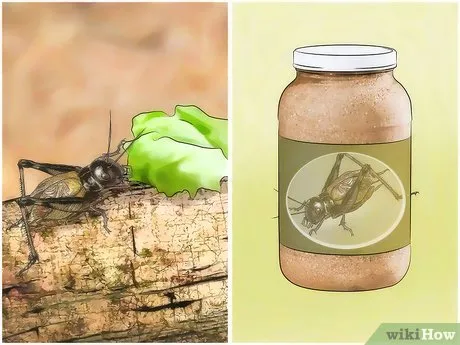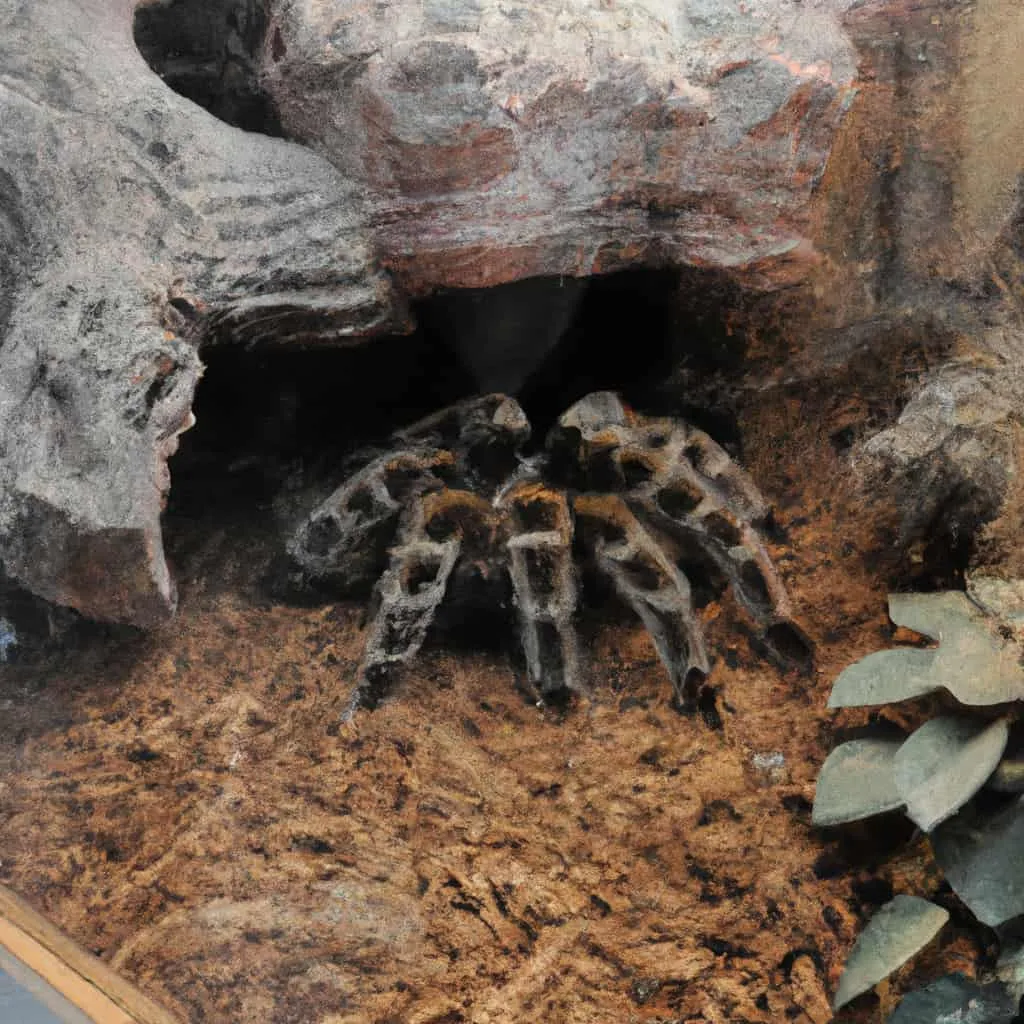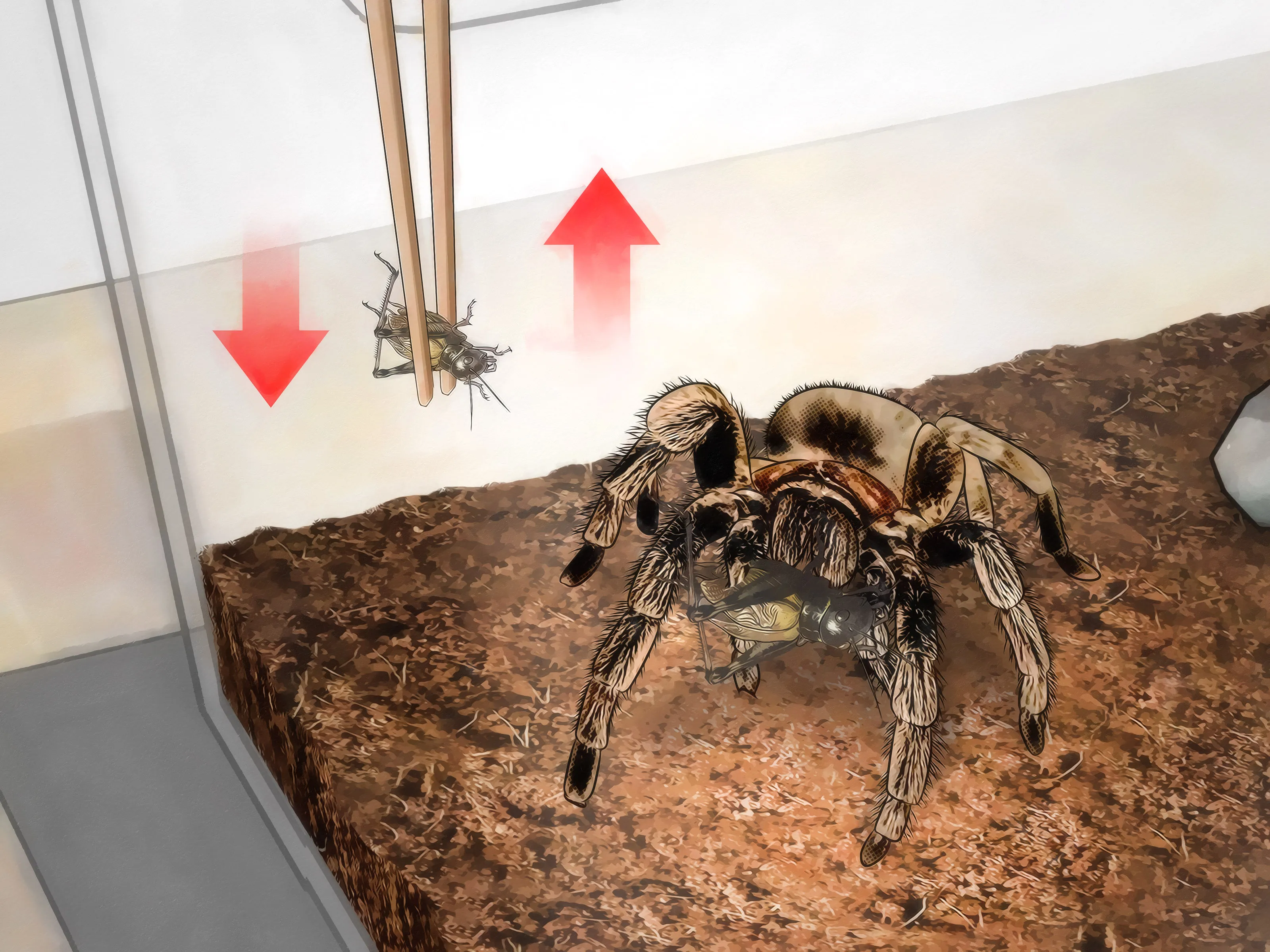Understanding Tarantula Dietary Needs
Caring for a tarantula involves understanding its dietary requirements, with crickets often serving as a primary food source. Knowing how many crickets to feed your tarantula is crucial for its health and well-being. Overfeeding can lead to obesity and molting problems, while underfeeding can stunt growth or cause the tarantula to become stressed. This guide provides comprehensive insights into determining the right amount of crickets to feed your tarantula, considering various factors, and ensuring your pet thrives in its environment. Correct feeding practices are vital for promoting a long and healthy life for your tarantula. It’s all about balance, observation, and adaptation based on your spider’s specific needs. Remember to always provide fresh water along with food.
Factors Influencing Cricket Consumption
Several factors influence how many crickets a tarantula needs. These elements can vary considerably, making it essential to tailor your feeding schedule based on your tarantula’s individual circumstances. Understanding these factors will help you make informed decisions about your pet’s diet, contributing significantly to its health and longevity. Proper care for your tarantula goes beyond just offering food; it includes a holistic understanding of its requirements and how they change over time. Always monitor your tarantula and adjust your feeding schedule according to their specific needs and behaviours.
Tarantula’s Size and Species

The size and species of your tarantula play a pivotal role in determining its appetite. Larger tarantulas naturally consume more crickets than smaller ones. For instance, a fully grown Goliath Birdeater (Theraphosa blondi), the largest tarantula species, will require significantly more crickets to maintain its size and energy levels compared to a smaller species like a Mexican Red Knee (Brachypelma hamorii). Furthermore, the metabolic rates and activity levels vary among species, influencing their feeding needs. Researching your tarantula’s specific species will provide a better understanding of its dietary needs. Different species of tarantulas have varying metabolisms that affect their appetites and the frequency with which they need to eat. (Image: tarantula-size-species.webp)
Tarantula’s Age and Growth Stage
A tarantula’s age and growth stage also impact its feeding requirements. Juvenile tarantulas, particularly those in their growth phase, require more frequent feeding compared to adults. This increased feeding frequency supports their rapid growth and development. However, it is crucial not to overfeed young tarantulas, as this can lead to premature molting and other health issues. As tarantulas mature, their metabolism slows down, and their feeding needs decrease. Adjust your feeding schedule accordingly, providing fewer crickets less often as your tarantula ages. It is important to keep in mind the specific growth stage your tarantula is in when determining how much to feed. (Image: young-tarantula-feeding.webp)
Environmental Conditions
Environmental conditions, such as temperature and humidity, can affect a tarantula’s appetite. Tarantulas tend to eat more when the temperature is within their preferred range. Similarly, humidity levels influence their overall health and well-being, indirectly affecting their feeding behavior. Ensure your tarantula’s enclosure maintains the recommended temperature and humidity levels for its species. Changes in these conditions can either increase or decrease the tarantula’s appetite, necessitating adjustments in your feeding schedule. When the temperature drops significantly, the tarantula’s metabolism slows down, and it might eat less. Keeping the environment stable is essential to manage your tarantula’s diet.
Determining the Right Cricket Quantity

Determining the right number of crickets to feed your tarantula requires observation and adjustment. There isn’t a one-size-fits-all answer, as needs vary. The key is to start with a conservative estimate and adjust based on your tarantula’s behavior and physical condition. It’s always better to slightly underfeed than to overfeed, as obesity can cause health issues. Regular monitoring and adjustments will ensure that your tarantula receives the appropriate amount of food, which is crucial for its health and well-being. Remember, each tarantula is unique, so pay close attention to its individual signals.
Observing Your Tarantula’s Feeding Behavior
Observe your tarantula’s feeding behavior to gauge its appetite accurately. A healthy tarantula will typically display an eager interest in food, quickly seizing and consuming crickets offered. If your tarantula consistently refuses to eat or shows a lack of interest, it may not be hungry or might be preparing to molt. Conversely, if your tarantula consumes all the crickets immediately and seems constantly hungry, you might need to increase the portion size or feeding frequency. Regularly monitoring your tarantula’s response to food provides valuable insights into its needs. The consistency of their appetite is an important indicator of their health and well-being.
Adjusting the Diet Based on Molting
Molting is a critical process where tarantulas shed their exoskeleton to grow. During this period, they typically stop eating entirely. Recognize the signs of an upcoming molt, such as a darkening abdomen, loss of appetite, and the tarantula sealing itself in its burrow. Reduce or stop feeding altogether during this time. Offering food can stress the tarantula and potentially interfere with the molting process. After molting, wait a few days before offering food to allow the tarantula’s new exoskeleton to harden. Gradual reintroduction of food ensures a smooth transition. Providing a stress-free environment is also critical for a healthy molt. (Image: tarantula-molting.webp)
Cricket Size and Its Impact

The size of the crickets you offer also influences the feeding process. The general rule is to feed crickets that are no larger than the tarantula’s body. Offering crickets that are too large can pose a risk, as the tarantula might have difficulty subduing them, or the crickets could injure the tarantula during the struggle. Select appropriately sized crickets, which ensures easier consumption and reduces potential hazards. For smaller tarantulas, provide smaller crickets to avoid overwhelming them. Match the cricket size to the tarantula’s overall body size, including the abdomen and cephalothorax. This ensures that the tarantula can eat the cricket efficiently.
Preparing and Feeding Crickets to Your Tarantula
Proper preparation and feeding techniques are crucial for safely providing crickets to your tarantula. Handling crickets and introducing them into the tarantula’s enclosure require care to minimize stress for both the spider and the feeder insect. Preparing the crickets, such as gut-loading them, can also enhance the nutritional value of their diet. A well-planned approach to feeding contributes to the health and well-being of your tarantula, ensuring it receives the necessary nutrients without unnecessary risks. Always make sure you have fresh crickets and that they’re healthy before offering them to your pet.
Cricket Preparation Tips
Before feeding, it’s best to prepare your crickets to maximize their nutritional value. Gut-loading involves feeding the crickets nutritious foods for 24-48 hours before offering them to your tarantula. This process enriches the crickets with vitamins and minerals, which are then passed on to your tarantula when it eats. Common gut-loading foods include fresh vegetables like carrots and potatoes, along with cricket-specific food. Ensure that the crickets have access to fresh water during gut-loading. Removing any uneaten food before offering crickets to your tarantula is also very important. (Image: cricket-preparation.webp)
Feeding Techniques

When feeding, introduce one or two crickets at a time. This prevents uneaten crickets from stressing your tarantula. You can use tongs to offer the crickets directly to the tarantula or release them into the enclosure. Observe the tarantula’s response and remove any uneaten crickets after 24 hours. Avoid leaving uneaten crickets in the enclosure for prolonged periods, as they can bother your tarantula, and potentially injure it during molting. If your tarantula consistently ignores the crickets, it might not be hungry or could be preparing to molt. Always clean up any leftover cricket parts.
Frequency of Feeding
The frequency of feeding varies depending on the tarantula’s age and species. Spiderlings and juvenile tarantulas typically need to be fed more frequently, perhaps every other day or every three days, while adult tarantulas can be fed less often, about once or twice a week. However, observe your tarantula’s feeding behavior. If your adult tarantula readily eats multiple crickets each feeding, you might increase the frequency. If it consistently refuses food, reduce the frequency. Adjust the feeding schedule based on the tarantula’s appetite and overall health. Be mindful of molting cycles when planning your feeding schedule. (Image: tarantula-feeding-frequency.webp)
Ensuring a Healthy Diet for Your Tarantula
Providing a healthy and balanced diet is essential for your tarantula’s well-being. While crickets are a staple food source, incorporating variety and supplements can enhance its nutritional intake. This approach contributes to a robust immune system, vibrant coloration, and overall longevity. A balanced diet also helps prevent nutritional deficiencies, which can lead to health issues. By focusing on the quality and variety of your tarantula’s diet, you can help it thrive. Ensuring a healthy diet for your tarantula shows your commitment to their well-being and happiness.
Supplementation and Variety

Supplementing your tarantula’s diet with vitamins and minerals can improve its health. Commercial supplements designed for reptiles or invertebrates can be dusted on the crickets before feeding. In addition to crickets, offer other insects occasionally. This provides dietary variety and enriches the tarantula’s nutritional intake. Consider offering mealworms, roaches, or other feeder insects. Ensure that any alternative feeders are properly gut-loaded before offering them. Varying the diet helps prevent nutritional deficiencies. (Image: healthy-tarantula-diet.webp)
Monitoring for Overfeeding
Monitoring your tarantula for signs of overfeeding is very important. Overfeeding can lead to obesity, which puts stress on the tarantula’s joints and can create problems during molting. Observe your tarantula’s abdomen. If it appears excessively large or round, you might be overfeeding. Reduce the frequency or the number of crickets you are providing. Adjusting the feeding schedule ensures you’re providing the appropriate amount of food without risking overfeeding. Preventing overfeeding requires a careful balance between providing enough nourishment and preventing health risks. Pay close attention to your tarantula’s body condition and adjust your approach accordingly.
